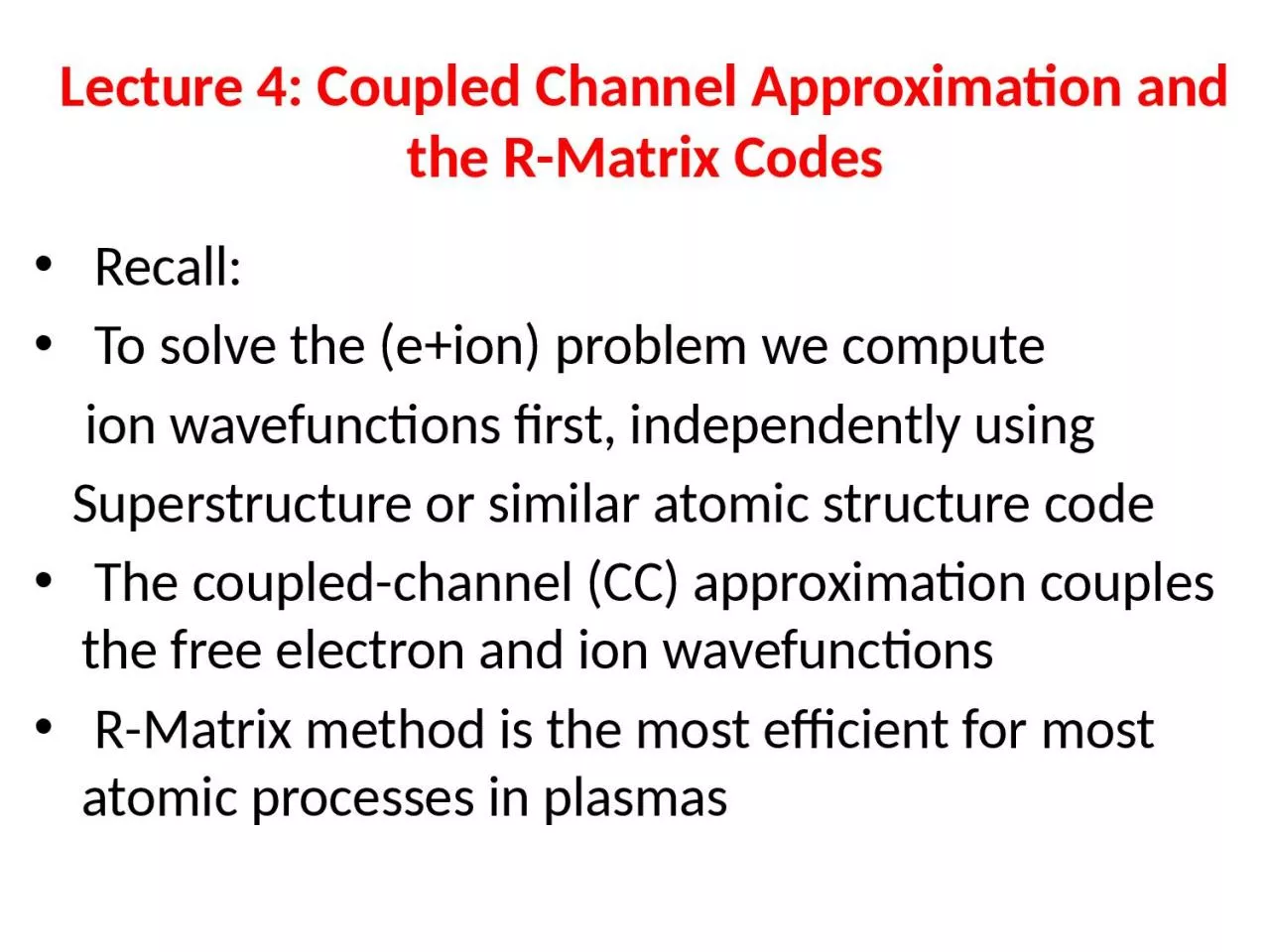

Recall To solve the eion problem we compute ion wavefunctions first independently using Superstructure or similar atomic structure code The coupledchannel CC approximation couples the free electron ID: 1020781
Download Presentation The PPT/PDF document "Lecture 4: Coupled Channel Approximation..." is the property of its rightful owner. Permission is granted to download and print the materials on this web site for personal, non-commercial use only, and to display it on your personal computer provided you do not modify the materials and that you retain all copyright notices contained in the materials. By downloading content from our website, you accept the terms of this agreement.
1. Lecture 4: Coupled Channel Approximation and the R-Matrix Codes Recall: To solve the (e+ion) problem we compute ion wavefunctions first, independently using Superstructure or similar atomic structure code The coupled-channel (CC) approximation couples the free electron and ion wavefunctions R-Matrix method is the most efficient for most atomic processes in plasmas
2. “Stages” of the R-Matrix Codes Superstructure (SS) one-electron orbitals (sspnl), optmized over target ion wavefunctions One and two-electron Slater integrals SS (sspnl) STG1 Angular algebra: STG2 reconstructs the target ion and couplings for the (e+ion) system STG1 STG2 (non-relativistic LS coupling) STG2 RECUPD: Intermediate re-coupling LS LSJ (Breit-Pauli approximation) RECUPD STGH: (e+ion) Hamiltonian Diagonalization
3. Flow Chart: Sets of R-Matrix Codes Non-relativistic R-Matrix and relativistic Breit-Pauli R-Matrix (BPRM): LS and LSJ coupling R-Matrix II codes: “Complete” (e+ion) angular treatment; large number of levels Dirac R-Matrix Codes (DARC): Use GRASP for target ion wavefunctions for high-Z systems Fig. 3.9 Flow chart
4. “Asymptotic” R-Matrix Codes Following (e+ion) hamiltonian diagonalization, STGH produces an H.DAT file which is utilized by subsidiary codes to calculate: electron-ion cross sections (STGF) (e+ion) bound state energy levels (STGB) bound-bound transition probabities (STGBB) bound-free (photoionization) cross sections (STGBF)
5. Astrophysical Quantities Absorption oscillator strengths and photoionization cross sections Opacities Line emissivities Emission Line Diagnostics All atomic parameters Non-LTE radiative transfer models